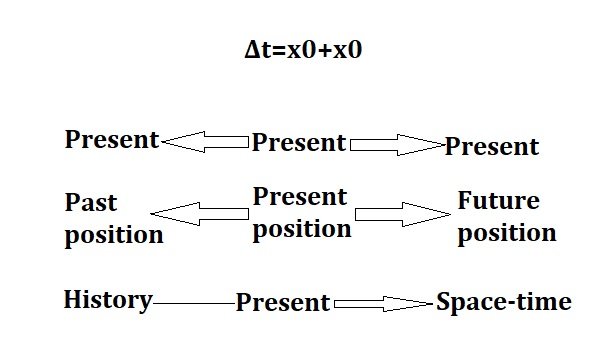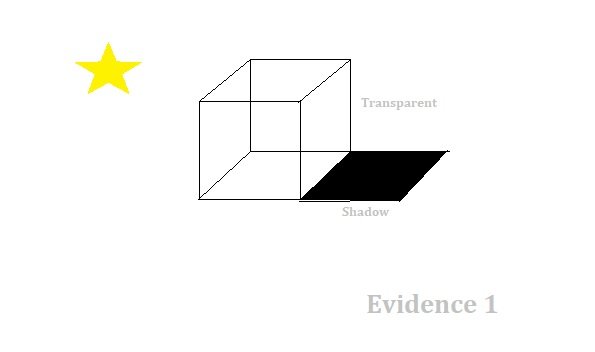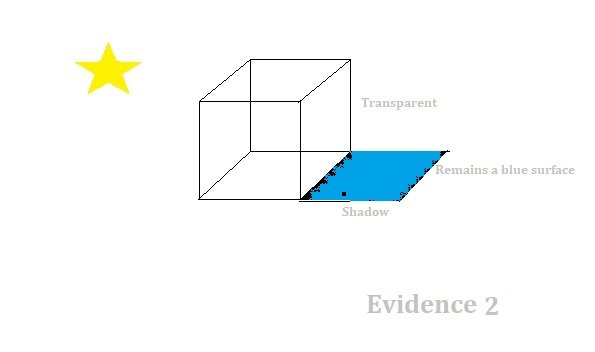

Ned
Senior Members-
Posts
116 -
Joined
-
Last visited
Recent Profile Visitors
The recent visitors block is disabled and is not being shown to other users.
Ned's Achievements

Baryon (4/13)
-41
Reputation
-

Time dilation or a change of frequency ?
Ned replied to Ned's topic in Modern and Theoretical Physics
Firstly if both clocks were used to measure time , the clock in motions claim is less frequency in less time . Therefore self contradicting . I gave an alternate correct ''math'' model before . Δf∝ΔU Change of frequency is proportional to a change of internal energy No subjective added time value required ! This can be proven by simply changing the Enthalpy -

Time dilation or a change of frequency ?
Ned replied to Ned's topic in Modern and Theoretical Physics
This is where you are incorrect because the clock in motion wasn't used to measure the elapsed time , the clock at rest was . The clock in motion measured less frequency over 1.s The clock at rest measured more frequency over 1.s Both clocks were measured using the clock at rest second , there is no disagreement on time because both clocks used 1 second based on the clock at rest . You aren't seeing this evidential point I'm making but rather instead resort back to the Hafelle and Keating alleged evidence . Evidence which I have provided counter evidence against . -

Time dilation or a change of frequency ?
Ned replied to Ned's topic in Modern and Theoretical Physics
-

Time dilation or a change of frequency ?
Ned replied to Ned's topic in Modern and Theoretical Physics
I'm not a liar , I have spent years of time discussing time . There isn't anything I don't know about time which makes me an expert . Time isn't exactly a difficult subject ! Anyway , better things to do than replying to your trolling . -

Time dilation or a change of frequency ?
Ned replied to Ned's topic in Modern and Theoretical Physics
It shows frequency difference which is exactly what the experiment showed . You said ''Sort of correct. Yes, clocks in motion were compared with clocks on the ground. That’s how you can tell if clocks ran fast or slow.'' Can't you see the implications of this ? Lets use ticks , it's easier to explain . The clock on the ground ticked 10 ticks , the clock in motion ticked 9 ticks compared to the ground clock . The clock on the ground and the clock in motion , both experience 10 ticks have passed . Ground clock 10/10Ticks Clock in motion 9/10Ticks No time dilation . If there is ten ticks in a mm and we both start to travel synchronised at c for 1mm , you haven't travelled 9 ticks whilst I travelled 10 . That is why d/t also proves there is no time dilation. Added - Starting at x0 , x0+x0=x1 of history . The rate of history (time) is actually instant as my math shows . There is no space or time between increments that can dilate . The time line of history is a continuos unbroken line that consists of points . A present point in time changes instantly to the next point , that is how time works . Did I say I was pretty much an expert on time ? -
Why do you seak attention ? Nothing delusional about real life observations . I guess I am more observant than you .
- 39 replies
-
-1
-
That wouldn't work because of the electricity used and the refridgerator unit generates heat . I use real physics , not make believe .
-
It isn't my evidence , it is an everyday observation anyone can perform using an object and light source . We can observe this when we create a shadow , only the surface becomes darker in appearance , the space in shadow remains transparent . If darkness existed we would observe the space in shadow to become less clear in appearance , the view of the surface would be obstructed by darkness . Just ignore the window in the diagram will you ?
-

Time dilation or a change of frequency ?
Ned replied to Ned's topic in Modern and Theoretical Physics
In the Hafele and Keating experiment the time lines weren't unequal , that is the problem . If you drew unequal lines , you wouldn't be drawing that experiment . Clock in motion : frequency over 1.s Clock at rest :frequency over 1.s Wheres the time difference ? Clock in motion : frequency over 1.s Clock at rest :frequency over 1.s Wheres the time difference ? The diagram shows no difference of time and my explanation , explains why . -
Hmm., no we are not , my diagrams show there is no darkness and you are incorrect . You can experiment with my diagrams in real life and observe that the space is not darkened when in shade . Only the surface is darkened .
- 39 replies
-
-1
-

Time dilation or a change of frequency ?
Ned replied to Ned's topic in Modern and Theoretical Physics
We are discussing time dilation and I provided a diagram of the process that is counter evidence against sciences claim of a time dilation . The diagram clearly shows there is no time dilation as time one is equal to time two t=t' . It additionally shows that frequency one is not equal to frequency two f1≠f2 . If you recall frequency is the amount of occurences over a unit of time , you can't use frequency as a unit of time . In the Haffele and Keating experiment the clock in motions measure of frequency was measured by the stationary clock , the defined unit of 1 second . Additional contradiction , the observer using the clock in motion claims time slowed down , so factually they are claiming less frequency over less time which demonstrates no time dilation and contradiciton . -
Evidence 1 Yes it goes darker and darker in appearance because it isn't being illuminated . The colour of the object becomes darker in appearance but there is no change of wavelength .
- 39 replies
-
-2
-
Which detect unbounded wave energy , they don't detect what the space is like in appearance . We can say the space is without unbounded electromagnetic radiation and all objects are visibaly dark in appearance but we can't declare the space is visible dark because it is transparent and has no mechanism to be dark or light in appearance . I understand it is a difficult concept to ''imagine'' but that is what the physics suggests . I am glad you mentioned shadows because if you observe an object that is placed in shadow , you will observe the surface of the object appears darker visually but the space remains visually transparent and unaltered in appearance .
-

Time dilation or a change of frequency ?
Ned replied to Ned's topic in Modern and Theoretical Physics
You are incorrect when a diagram shows the experiment and the discourse supports the claim . The evidence is the method of hafele and keating experiment and the results . The evidence is definition , what is frequency ? I'm 100% correct on this and have proved it in this thread with discourse and diagrams . The last diagram and explanation ''killed it '' , I'll take on science anyday because they don't scare me from revealing the truth . The Caesium in motion frequency was measured by the clock at rest , end of argument , I win this debate . -
What evidence do you have of the existence of darkness other than it being a perception ?
- 39 replies
-
-1



